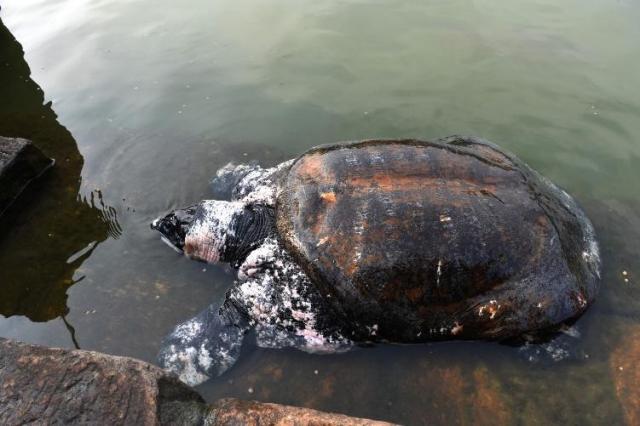Context: The Baneshwar Village in the Cooch Behar region of West Bengal has a Shiva Temple built during the reign of Koch Dynasty in the 17th Century.
The temple pond is home to the critically endangered black Softshell turtels, which the locals lovingly call ‘Mohan’. Recognising the close bond between the local population and with these turtles, Election Commission of India has adopted ‘Mohan Babu’ as its mascot to get people out to polling booths on April 19.
About Black Softshell Turtle
- The black softshell turtle, also referred to as the Bostami turtle, holds a unique place in the realm of freshwater turtles.
- Once considered a variant of other species such as the Indian softshell turtle or the Indian peacock softshell turtle, it has now been recognized as a distinct species.
- Indigenous to the regions of India, specifically Assam and Tripura, as well as Bangladesh, notably Chittagong and Sylhet, this species has a rich history intertwined with cultural significance.
- IUCN STATUS: Critically Endangered
- CITES: Appendix I
- Wildlife (Protection) Act, 1972: No legal protection
Origins and Cultural Heritage
- Legend has it that in the 1800s, Hazrat Bayezid Bostami brought these turtles from Iran to the Chittagong shrine pond.
- These turtles, revered as sacred beings, garnered respect and reverence from the local populace.
Conservation Efforts and Discoveries
- Declared extinct by the International Union for Conservation of Nature in 2002, the black softshell turtle surprised researchers when populations were found in the Hayagriva Madhava Temple Pond in Assam and the Kalyan Sagar Lake in the Tripura Sundari Temple in Udaipur, Tripura, India.
- Through concerted conservation measures and habitat protection, these turtles have managed to survive in the wild.
Scientific Insights and Continued Research
- Their mitochondrial genome reveals connections to 19 other turtle species.
- In phylogenetic trees, Nilssonia nigricans emerges as a sister species to Nilssonia formosa, shedding light on their evolutionary relationships.
Behavior
- Hibernation takes place during the late autumn season until the spring for softshell turtles.
- They bury themselves at the bottom of a river/lake in the mud.
- Food is not as essential as oxygen during this period.
- Oxygen is needed at a reduced rate than normal, and the turtles practice a technique called “pharyngeal breathing”.
- This means that they pump water in and out of their throat (pharynx) that contain microvillus projections of small blood vessels.
- This structure provides them with greater surface area to absorb more oxygen.

